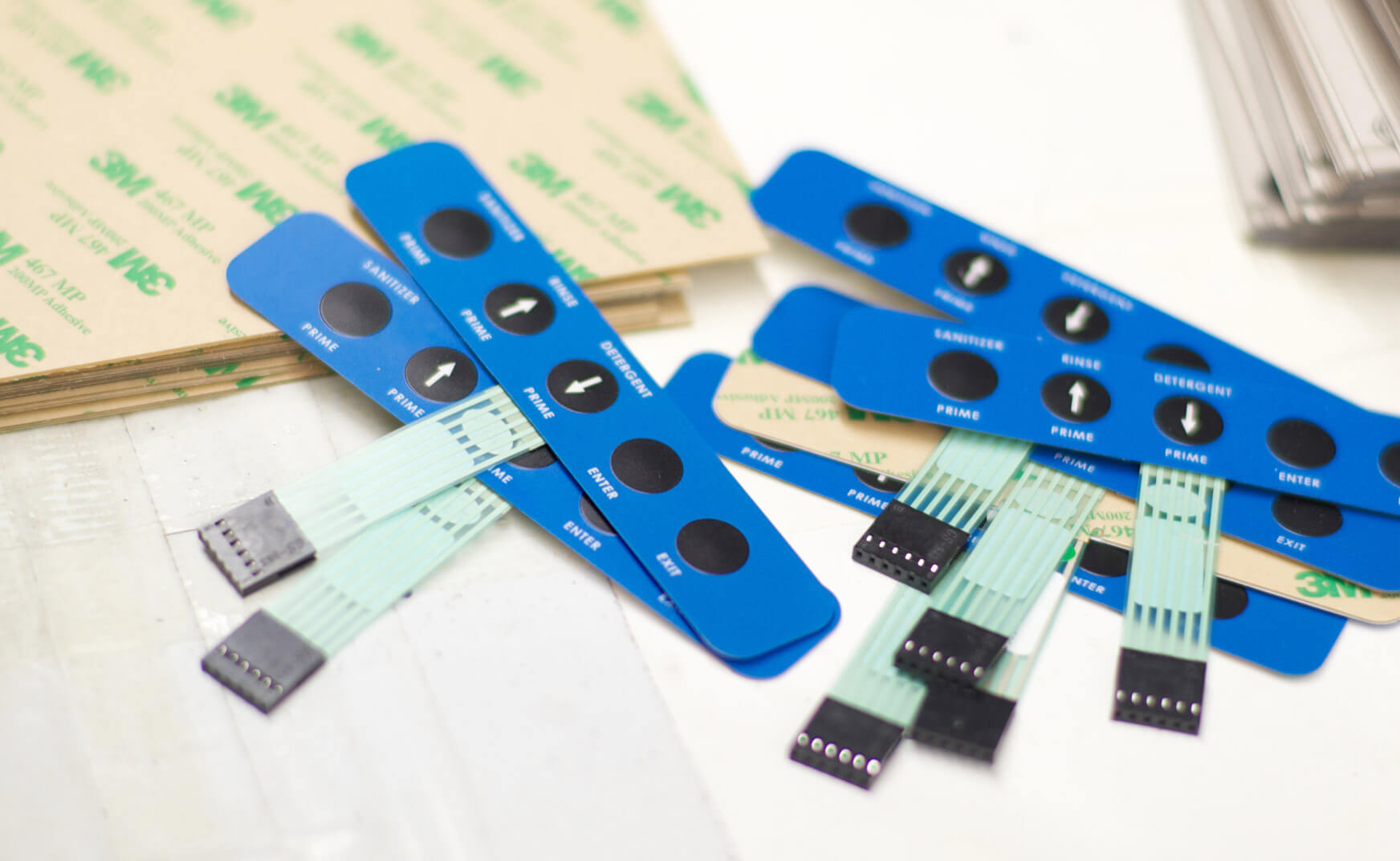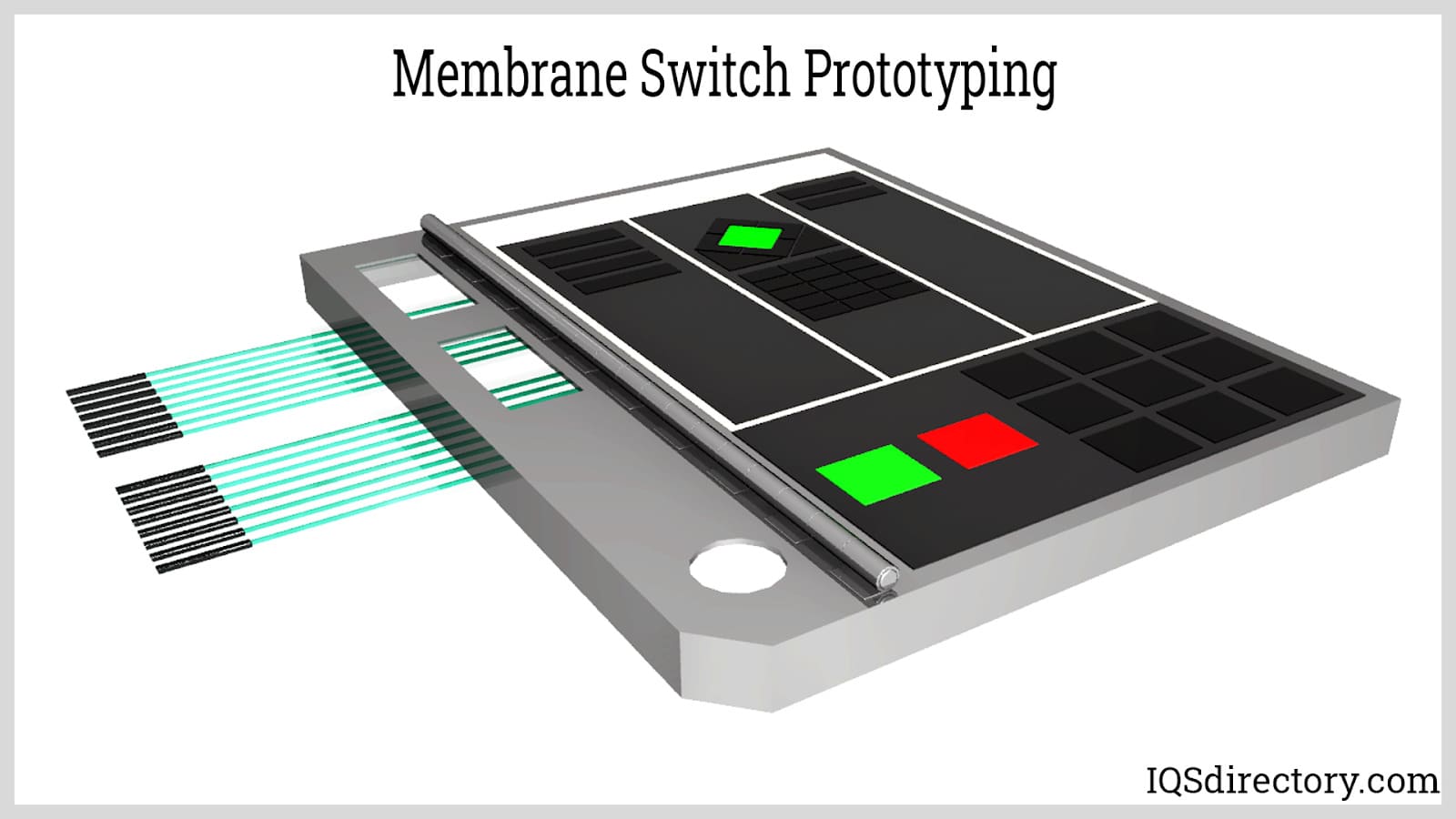The Impact of Membrane Switches on the Development of Wearable Technology
Membrane Layer Switch Over Modern Technology: The Trick to Trustworthy and Affordable User Interfaces
Membrane button modern technology has arised as a pivotal part in the design of user interfaces, supplying both reliability and cost-effectiveness across a varied variety of applications. Its durable construction guarantees resistance to environmental difficulties, while the adaptability in layout allows for customized solutions that fulfill particular sector demands. As we check out the diverse advantages of membrane layer switches, their potential for development increases concerns regarding future applications and developing fads. What does the next phase hold for this technology in a significantly digital landscape?
Understanding Membrane Switch Innovation
Membrane button technology is an extensively utilized user interface solution in various digital gadgets, using a smooth blend of functionality and design. This technology incorporates multiple layers of materials, generally being composed of a visuals overlay, spacer layer, and a circuit layer. The visuals overlay shows the interface elements, while the spacer layer divides the circuit layer from the overlay until a user turns on a button.
When stress is applied to the overlay, the circuit layer finishes the electric circuit, sending out a signal to the device. This mechanism enables for different configurations, including responsive feedback and backlighting alternatives, enhancing user communication. Membrane layer buttons are commonly manufactured using sturdy materials such as polyester or polycarbonate, making certain long life and resistance to environmental variables like moisture and dust.
The flexibility of membrane switches allows their application in varied industries, including medical tools, customer electronic devices, and commercial controls. Their compact design permits for integration right into space-constrained atmospheres, offering an effective interface without compromising aesthetic allure. Recognizing the ins and outs of membrane layer switch technology is vital for manufacturers and developers seeking to develop dependable and effective human-machine user interfaces.
Trick Benefits of Membrane Buttons
While various interface solutions exist, membrane switches offer distinct benefits that make them a favored selection in various applications. One of the key advantages is their sturdiness; membrane switches are made to stand up to rough environmental conditions, consisting of moisture, dirt, and temperature variations, guaranteeing lasting efficiency. This resilience considerably decreases the demand for frequent replacements, thereby reducing total upkeep costs.

Additionally, membrane layer buttons are lightweight and small, making them suitable for applications where space is limited. Their low-profile style adds to a smooth appearance without endangering performance.
Cost-effectiveness is likewise a remarkable advantage, as the production procedure for membrane switches over tends to be less pricey contrasted to conventional mechanical switches. This affordability, combined with their integrity and convenience of installation, placements membrane switches as a practical remedy for a large range of markets looking for effective and efficient interface.
Applications Throughout Different Industries
How do membrane layer buttons adjust to the diverse needs of various markets? Membrane layer switch technology is significantly identified for its adaptability, making it suitable for a large range of applications across several sectors. In the clinical area, membrane layer switches are made use of in diagnostic devices and patient tracking gadgets, where their longevity and simplicity of cleaning are important for maintaining hygiene criteria. The automobile industry uses these buttons in dashboards and control board, using a streamlined aesthetic while ensuring easy to use procedure.
In customer electronics, membrane buttons offer a small remedy for remotes and home devices, boosting individual experience through instinctive design. Additionally, the commercial market leverages membrane layer buttons for machinery control panels, taking advantage of their resistance to extreme settings, such as moisture and dirt.
Armed forces and aerospace applications additionally make use of membrane layer buttons for their integrity and capacity to click for info stand up to severe problems, making certain operational effectiveness in important scenarios. The food and beverage industry embraces these switches for automated systems, where sanitation and ease of procedure are extremely important (membrane switch). Inevitably, membrane buttons are tailored to satisfy the unique needs of each sector, proving their vital function in modern innovation interfaces
Layout and Customization Choices

In the realm of membrane layer switch technology, style and customization alternatives play a crucial duty in boosting functionality and user communication. These switches can be tailored to meet particular operational needs and aesthetic preferences, making them flexible components in different applications.
One of the main personalization options is the layout of the button itself, which can be made to accommodate distinct interface and ergonomic considerations. By changing the form, size, and setup of buttons, producers can create user-friendly designs that facilitate ease of use. In addition, the consolidation of different shades and graphic overlays enables branding and enhanced visibility, guaranteeing that users can swiftly recognize features.
Furthermore, membrane buttons can be crafted with various tactile comments devices, such as increased switches or distinct clicks, to boost the user experience. Various materials can additionally be selected for longevity and environmental resistance, resolving elements such as wetness, temperature changes, and chemical exposure.
Ultimately, the substantial layout and modification choices available in membrane layer switch modern technology equip services to create customized services that not just fulfill practical demands but likewise straighten with their branding and functional demands.

Future Trends in Membrane Layer Buttons
As membrane switch technology continues to advance, future fads are increasingly concentrated on boosting user experience and integrating advanced functionalities. One substantial trend is the assimilation of touch-sensitive and capacitive innovations right into typical membrane layer buttons. This advancement enables more intuitive individual interfaces, providing responsive responses while preserving a sleek design.
Another official source emerging trend is using eco pleasant products, driven by the expanding need for lasting manufacturing practices. Producers are seeking to lower their carbon impact by making use of recyclable substratums and low-impact inks, straightening with worldwide sustainability goals.
In addition, the increase of the Net of Things (IoT) is motivating the unification of wise attributes into membrane layer buttons. Enhanced connectivity options will certainly enable devices to interact with each other, permitting for smooth assimilation right into more linked here comprehensive systems.
In addition, developments in printing innovations, such as electronic printing, are permitting for higher design versatility and customization. This makes it possible for manufacturers to create elaborate styles and vibrant colors cost-effectively.
Conclusion
To conclude, membrane button modern technology represents an important development in interface layout, offering significant benefits in durability, customization, and cost-effectiveness. Its prevalent applicability throughout diverse sectors emphasizes its importance in contemporary technology. As developments continue to emerge, particularly in touch-sensitive user interfaces and sustainable materials, the possibility for membrane layer switches to boost user experience and functionality continues to be promising. Continued exploration of this modern technology will likely generate further enhancements and broaden its range in future applications.